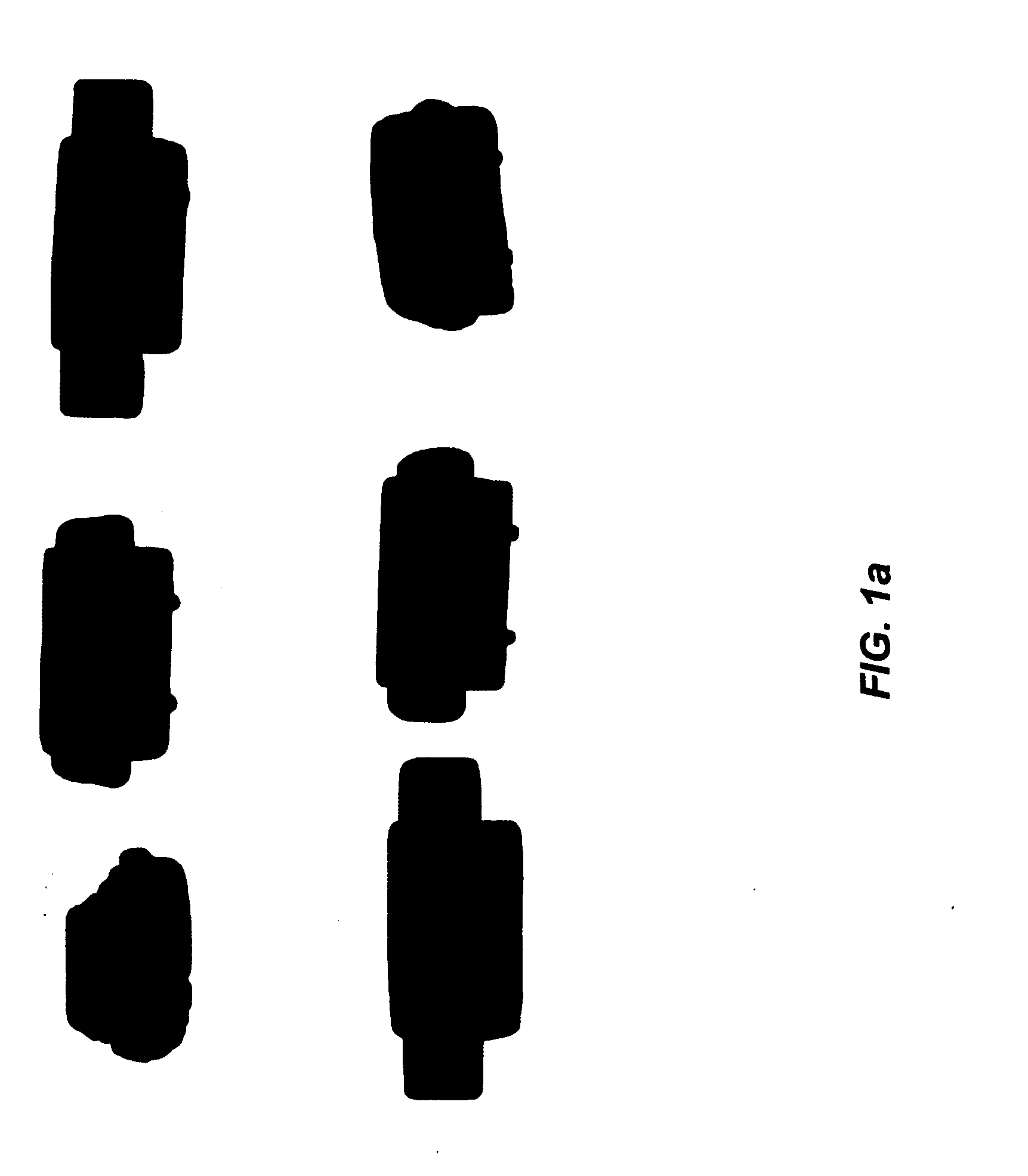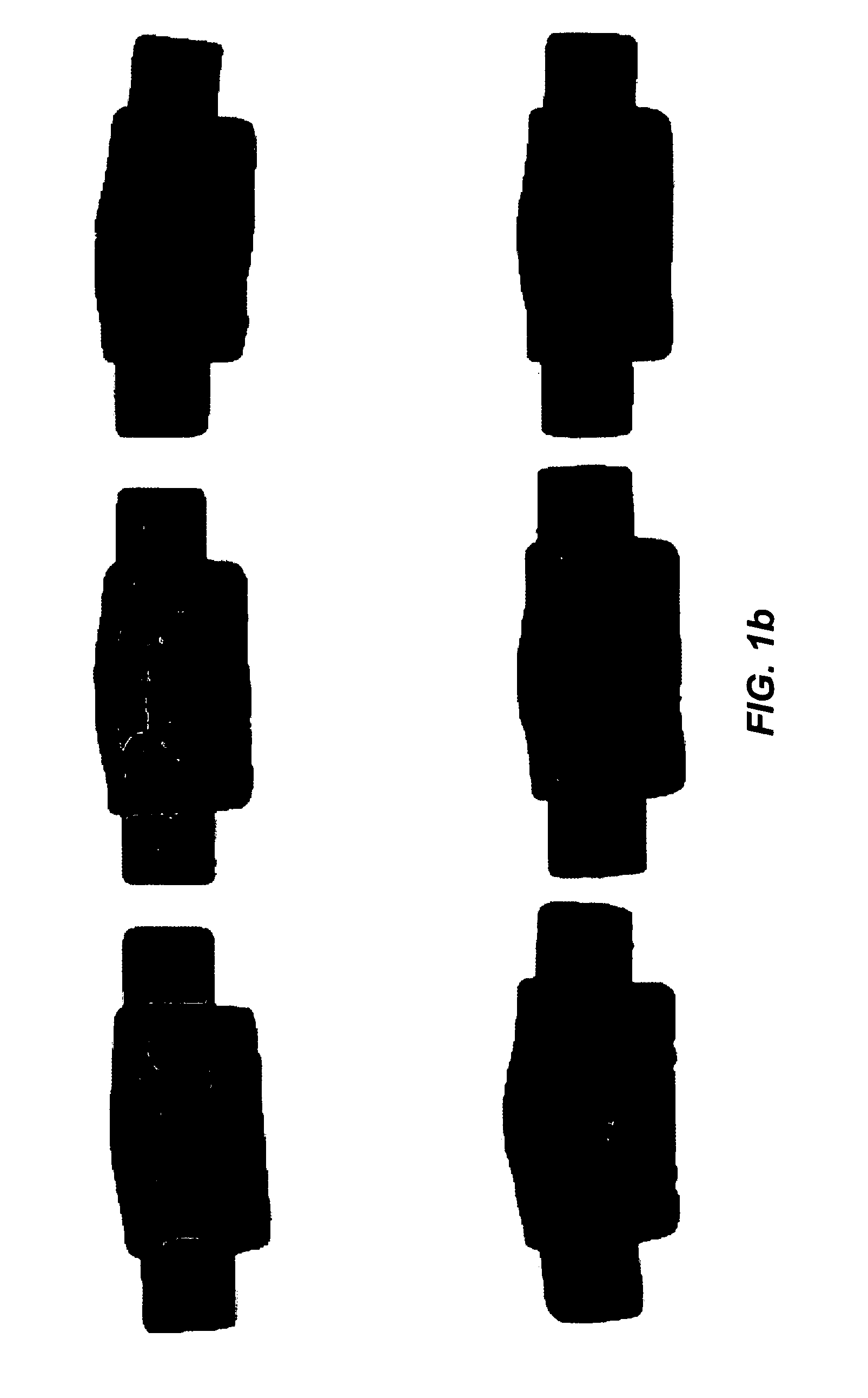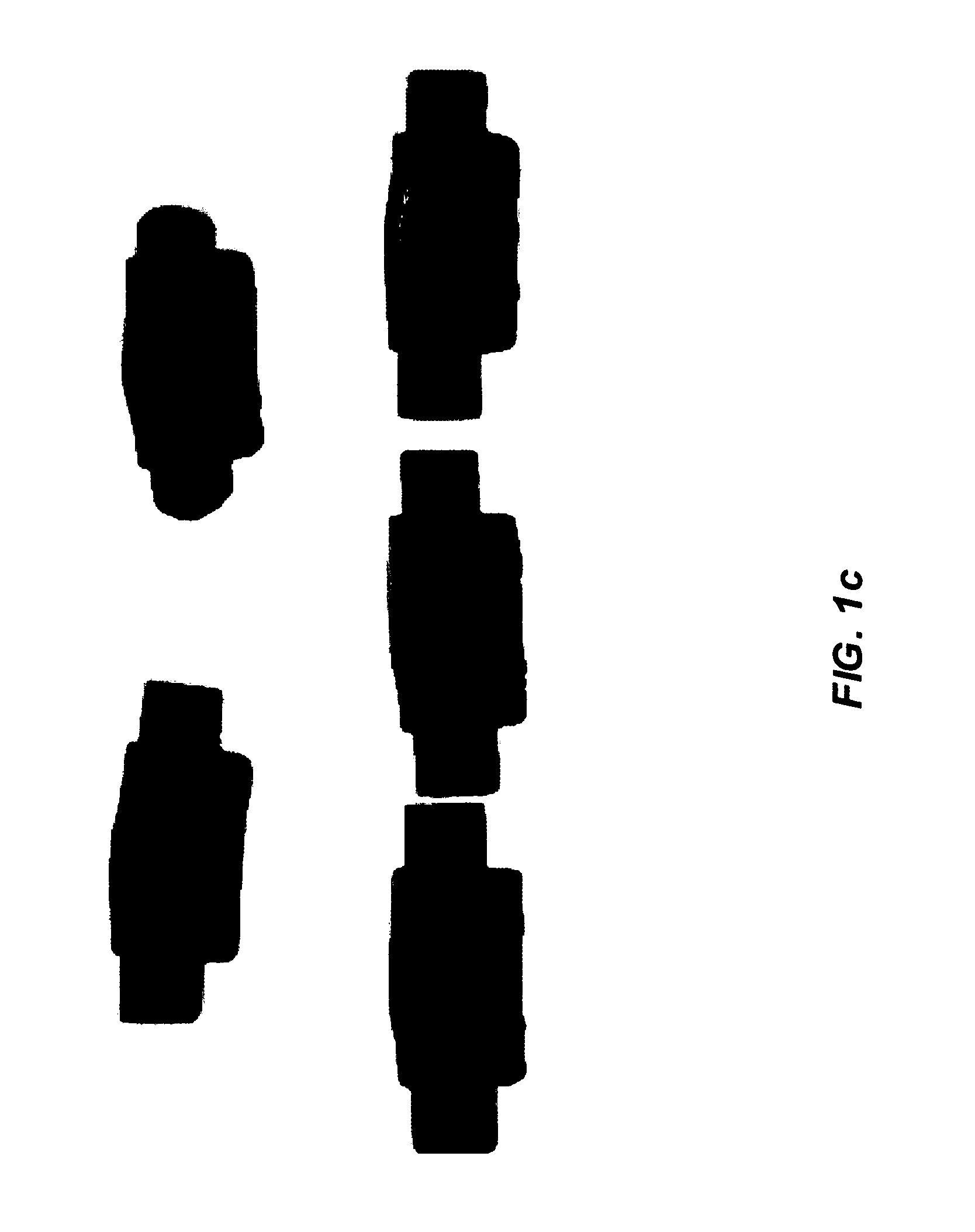High amylose dog chew formulation
- Summary
- Abstract
- Description
- Claims
- Application Information
AI Technical Summary
Benefits of technology
Problems solved by technology
Method used
Image
Examples
example 1
[0037] According to this example, compositions comprising starch, plasticizer (glycerin), humectant (sorbitol, sucrose or corn syrup solids DE 42) and water were processed according to the following procedure in combination with conventional additives to produce edible thermoplastic beads which can later be molded to form pet chews. The formulations also included minor additional ingredients including lecithin (Lecigran™ 1000p, Cargill), cellulosic fiber, (Creafill fiber TC180, Creafill Fibers Corp., Chestertown, Md.), sodium stearoyl lactylate, (Paniplex® SK, ADM), sorbic acid and a yeast-based flavor enhancer. Formulations 1A-1G were generally similar, the exception being the amylose content of the starches used. In Run 1A a waxy corn starch was used having 100% amylopectin (0% amylose) while Runs 1B-1G used different combinations of a pearl (dent) starch having an amylose content of about 25% when measured by size exclusion chromatography and a high amylose starch Gelose®50 havin...
example 2
[0043] The pellets formed in Example 1 were then used to produce bone-shaped pet chews using an injection molding device according to conventional methods. Barrel temperature of the injection molder was 200° to 210° F. with an injection temperature of 260° F.
[0044] Pet chews formed according to the processes above and having starch contents of 100% waxy starch (0% amylose); 100% pearl (dent) corn starch (less than 25% amylose); a blend comprising about 27% amylose; and a blend of starches comprising about 31% amylose were compared. See FIGS. 1a, 1b, 1c and 1d showing respectively the results of chew formulations having amylose concentrations of 0%, 25%, 29% and 31%. The pet chew formed from 100% amylopectin / 0% amylose (Run 1A) had significant sticking problems and failed to fill the molds properly. The pet chews comprising 25% amylose (Run 1E) were superior to those formed from waxy starch but still had sticking problems and failed to completely fill the molds. The pet chews compri...
PUM
 Login to View More
Login to View More Abstract
Description
Claims
Application Information
 Login to View More
Login to View More - R&D
- Intellectual Property
- Life Sciences
- Materials
- Tech Scout
- Unparalleled Data Quality
- Higher Quality Content
- 60% Fewer Hallucinations
Browse by: Latest US Patents, China's latest patents, Technical Efficacy Thesaurus, Application Domain, Technology Topic, Popular Technical Reports.
© 2025 PatSnap. All rights reserved.Legal|Privacy policy|Modern Slavery Act Transparency Statement|Sitemap|About US| Contact US: help@patsnap.com



